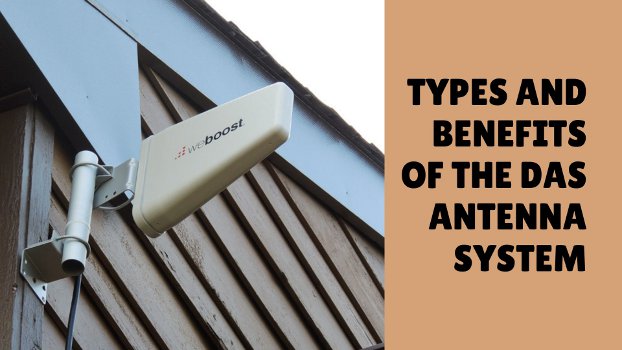Das antenna system is a system used in wireless communication. It is also called a beam-forming system. The das antenna solution has been used by many companies, homeowners, and government agencies to improve the network coverage of buildings or places where they need to place their network towers. The use of das antenna systems helps in improving the signal quality of the wireless networks for better data transfer between different buildings and places.

Though not all routers have das antennas, they are still relevant in improving the accuracy and performance of your wireless network.
In this write-up, we will cover the different types of distributed antenna systems and what advantages it has to offer.
Different Types of Distributed Antenna Systems
The need for DAS installation arises when voice calls begin to break and text messages are delayed because of poor cellular signal reception. Hence, varying DAS variations are available depending on the different types of building structures and connectivity issues faced.
Passive Distributed Antenna System
The Passive DAS components like the amplifier and signal source are connected. Further, this connection is expanded to the distributed antenna installed in the building using appropriate cables. The Passive may face signal loss but the solution is considerable because of its affordability. Furthermore, such an antenna can rebroadcast the macro signals. As a result, there remains a lesser need for coordination or approval for the carrier for signal transmission. Even there is no additional need for the equipment to facilitate enormous carriers. Also, the maintenance is simple and costs minimal. Isn’t it great!!
Active Distributed Antenna System
The functioning of Active distributed antenna systems relies on the installation of amplifiers at the location of antennas. This way, the signals are transferred from amplifiers to the locations with DAS setup. The signals can be broadcasted either via fiber optic cables or CAT cabling.
Furthermore, the role of the amplifier is to rectify the signals received from the repeater. As a result, delivering quality signals to the user’s devices. Of course, the Active DAS may cover transmitting signals to large buildings or areas. However, it is quite complex and is much more expensive than other DAS types.
Hybrid Distributed Antenna System
A hybrid DAS is a combination of active and passive DAS capabilities. It used fiber cables for broadcasting signals. However, it is more dependent on coaxial cables for increased signal distribution. Thus, allowing to leverage of the benefits from both fiber optic and coaxial cables. The medium-sized home or corporate space can benefit from the installation of Hybris DAS facing unusual signals or interrupted communication.
The best thing is it is more affordable than both Active and Passive DAS. Also, there is no limit to the cable length used for signal transmission.
Advantages of Distributed Antenna Systems
The DAS and mobile phone signal boosters are similar. However, they may differ a little bit in terms of benefits. So, below are shared some amazing benefits that you must know about DAS installation before installing one.
Enhanced Network Coverage Efficiency
A distributed antenna system guarantees improved communication and defined network coverage. It does not matter if it is your business interactions that need quality signal strength delivered or your work from home requires no delayed or dropped connectivity. All in all, installing a DAS system reduces any chances of dropped calls, poor video conferencing, or delayed text messages.
Better Scalability and Defined Coverage
Distributed antenna systems offer scalability ensuring all future network connectivity requirements are fulfilled. It allows the integration of additional nodes. Talking about coverage, DAS architecture is capable of covering different dead spots of the buildings that are challenging to address with traditional solutions. Furthermore, it can eliminate poor signal transmission and enhance signal capacity. Therefore, ensuring consumers experience excellent in-building network coverage.
DAS system installation overcomes the penetration of lost or poor-quality signals. This way, the staff in the office, individuals staying at home, and visitors or guests are provided an enjoyable experience with better signal transmission. Furthermore, making phone calls, sending SMS, or browsing the internet is easier without having to find room spots or areas receiving better signals.
Improved Wi-Fi Connectivity
Many offices or home establishments use Wi-Fi for connectivity. However, many structures are facing poor-quality communication because of bandwidth restrictions. Especially, when multiple users connect with one Wi-Fi available. You might be wondering why it is so as Wi-Fi is a shared resource providing access to as many users.
Here, installing a distributed antenna system comes as the solution. How? It adds additional coverage and increases user capacity. Thus, reducing the burden of Wi-Fi installed. The overcapacity issues are resolved and a better user experience is delivered.
Cost-Effective
DAS works on multiple low-power antennas. This means connectivity is not dependent on one single powered antenna and less power is consumed. Of course, corporate building owners or homeowners would want more reliable connectivity while saving money. Hence, installing a distributed antenna system comes as a cost-efficient solution.
Conclusion
Das antenna system is one of the most important subsystems in a basic networking setup. It charts the path to more effective utilization of a wireless network and provides multiple benefits that are very useful. Additionally, it is an integral part of wireless communication technology, used to improve the range or reachability of a single access point or even multiple access points together.
Hence, if you think DAS is the solution to your network coverage hassles or everyday communication interruptions, get it installed today. Do ensure taking help from experts who can help you choose an innovative and cost-effective DAS type.
